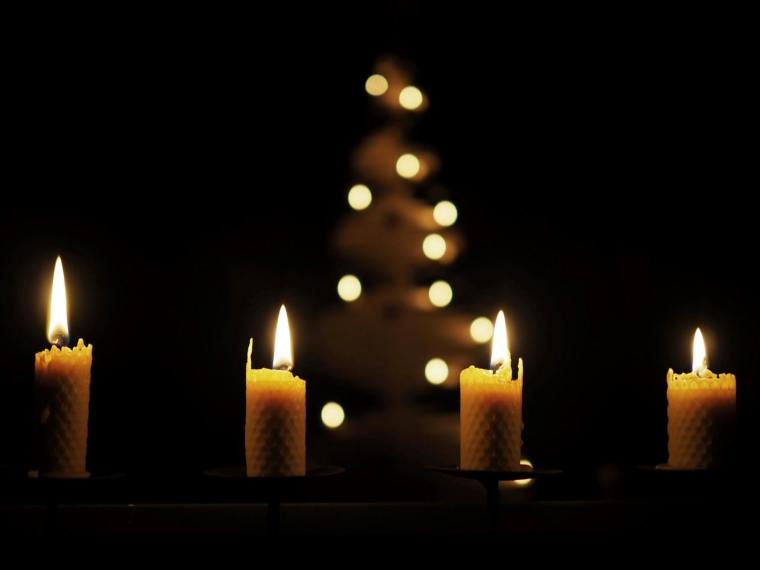Adjustments in Advent observance come as season looks to Christ’s return
Advent #Advent

By Kyle Huckins, Contributor Follow | Sunday, November 29, 2020  Unsplash/Amelie & Niklas Ohlrogge
Unsplash/Amelie & Niklas Ohlrogge
Amid announcements of Advent services going online due to concerns over COVID-19, Christians on Sunday are beginning that season of celebrating Jesus’ incarnation over 2,000 years ago and anticipating His return.
The Vatican will livestream Advent and Christmas observances from St. Peter’s Basilica. Pope Francis recently went back to celebrating mass online, although a small number of faithful will continue to be allowed to gather in-person at St. Peter’s Basilica, according to the National Catholic Register.
The Lutheran World Federation is expanding its program of sharing Advent hymns online. Its churches in Canada, Denmark, El Salvador, Indonesia, Poland, Senegal and Sweden will cross-share video posts on social media and websites as well as share them with the general public in an effort to teach others about Lutheranism.
Roman Catholic and mainline churches make up the largest groups observing Advent. They will also be joined by some conservative Reformed denominations and a subset of evangelical congregations.
Offering an evangelical view will be Max Jeganathan of Razi Zacharias International Ministries, who will release a new video each week of the season. The short presentations will focus on traditional Advent themes in turn.
Free CP Newsletters
Join over 250,000 others to get the top stories curated daily, plus special offers!
Free CP Newsletters
Join over 250,000 others to get the top stories curated daily, plus special offers!
Advent, from the Latin “advenio,” “to come to,” is composed of the four Sundays before Christmas in Western countries and runs from Nov. 15 to Dec. 24 in the East. The event is to keep believers focused on the Second Coming of Christ while decorations and parties celebrate His birth.
“During this time the faithful are admonished to prepare themselves worthily to celebrate the anniversary of the Lord’s coming into the world as the incarnate God of love,” reads the Catholic Encyclopedia of the early 20th century, “thus to make their souls fitting abodes for the Redeemer coming in Holy Communion and through grace, and thereby to make themselves ready for His final coming as judge, at death and at the end of the world.”
The first such season is mentioned in church annals in 380 A.D., about the same time that Christmas began to be celebrated. The month of Sunday observances was in place by 600 A.D.
Historically, the Advent season was a time of solemnity and repentance. Priests covered pictures and statues, removed flowers from sanctuaries and silenced organs. The atmosphere was of mourning for the worldly propensity to sin because Christ could return to His own at any moment, with believers urged to fast to rid themselves of dependence on a corrupted Creation.
The scene has lightened over the last few hundred years, with Roman Catholic clergy’s garments changing from black to violet for the four-week season and fasting down to seven days.
On the Protestant side, the most common element of Advent is a wreath with four candles, one for each Sunday. Candles may be all red, two blue and two white, or the first, second and fourth purple with the third rose. If there is a fifth candle for Christmas, it is white.
The first is the “Prophets’ Candle,” symbolizing the hope for the Messiah’s coming of the Old Testament seers such as Isaiah, Jeremiah and Haggai.
The second is the “Bethlehem Candle,” named for Christ’s birthplace when his parents were on the road from Nazareth to take part in Quirinius’ census. It stands for faith, since Micah 5:2 foretold where the Lord would be born: “But you, Bethlehem Ephrathah, though you are little among the thousands of Judah, yet out of you shall come forth to Me the One to be Ruler in Israel, whose goings forth are from of old, from everlasting.”
The third is the “Shepherds’ Candle,” for the joy that the tenders of sheep had at the announcement of Christ’s birth. “Do not be afraid, for behold, I bring you good tidings of great joy which will be to all people,” an angel said to them (Luke 2:10).
The fourth is the “Angel’s Candle,” standing for the peace the heralds proclaimed with the coming of the Christ child. “Glory to God in the highest and on earth peace, goodwill toward men!” the heavenly host exult in Luke 2:14.
The optional fifth candle is “Christ’s Candle” and lit on Christmas for Jesus’ incarnation. It is white for His purity and placed in the center of the wreath since He is central to all that exists (Colossians 1:16-17).
Free CP Newsletters
Join over 250,000 others to get the top stories curated daily, plus special offers!
Free CP Newsletters
Join over 250,000 others to get the top stories curated daily, plus special offers!